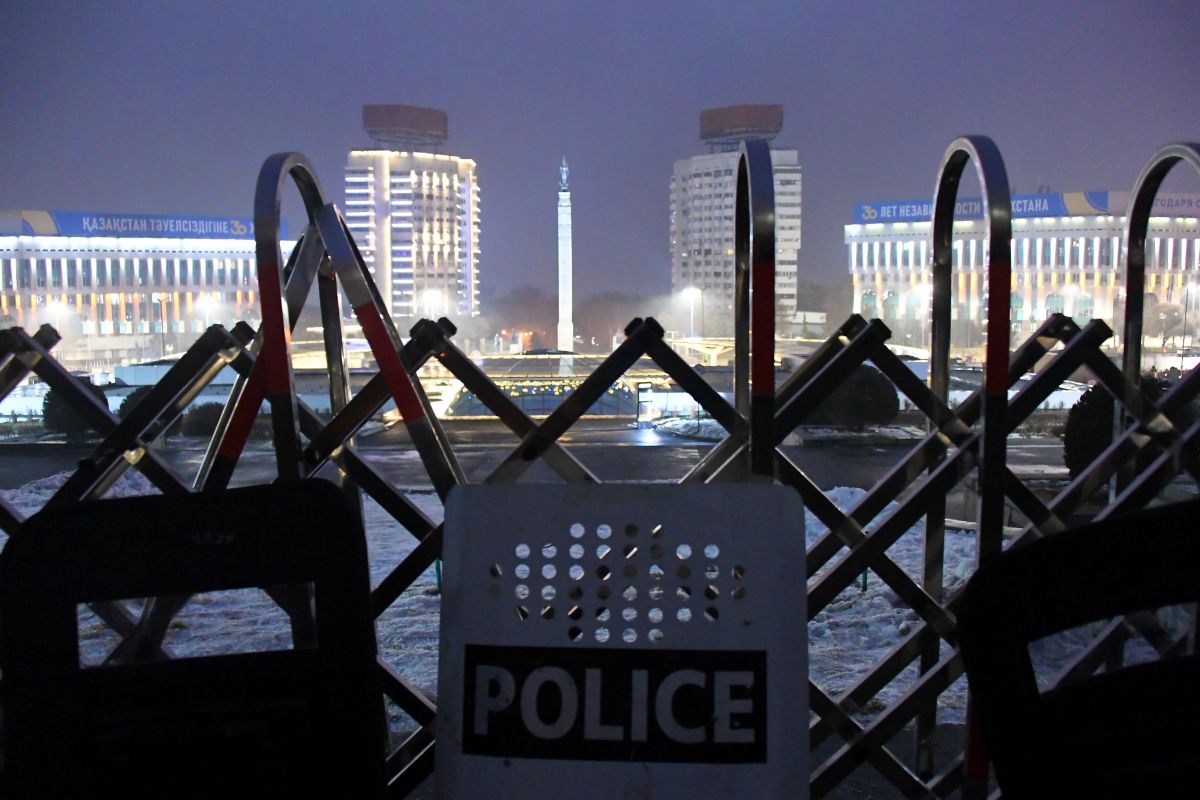Mass Protests in Kazakhstan
The protests that erupted in the west of Kazakhstan in early January spread to the rest of the country and took on an anti-government character. The consequences of them include an escalation of violence by the Kazakh authorities and the potential for a further strengthening of authoritarian regimes in the region.
 Fot. Reuters/ STRINGER/ FORUM
Fot. Reuters/ STRINGER/ FORUM
Where are the protests and what has happened?
On 2 January, protests erupted in the industrial province of Mangystau in the west of Kazakhstan and gradually spread to other regions and major cities, including Almaty and Nur-Sultan. Across the country, according to various estimates, tens of thousands of people took to the streets. Some protesters stormed government buildings and clashed with the police and the army. The demonstrations have been spontaneous so far. Participants initially demanded the fulfilment of social demands such as cuts in prices of certain goods and the resignation of the government. However, over time they began to demand that the head of the Security Council, Nursultan Nazarbayev, also leave politics. Nazarbayev, a former president, formally stepped down in 2019 and handed over power to the new head of state Kassym-Jomart Tokayev, but informally continued to rule the country.
What led to the protests?
The immediate cause of the protests was a doubling of the price of liquefied natural gas, commonly used in Kazakhstan as fuel for cars, at the start of the year. The increase overlapped with growing discontent over the past year in Kazakh society over the country’s difficult socio-economic situation caused by the COVID-19 pandemic, the accompanying oil market crisis, and ongoing, widespread corruption. Driven mainly by rising food prices, inflation in Kazakhstan reached almost 9% at the end of last year and led to a sharp fall in the population’s purchasing power. The deteriorating material situation encouraged the rapid spread of protests from the west to the rest of the country.
What has been the reaction of the Kazakh authorities?
The authorities’ first reaction was limited pacification of the protests, arrests, and blocking of mobile networks, selected social media (Facebook, VK, Telegram), and then the internet overall, followed by the introduction of a state of emergency. When the protests turned anti-government, President Tokayev dismissed the prime minister and froze the prices of gas and other key products for 180 days. However, these were short-term measures that did not satisfy the protesters. The regime was forced to make further concessions, including removing Nazarbayev from his post as head of the Security Council. In the short term, a further escalation of the protests is possible, as well as continued violent pacification of them, as the authorities will want to avoid the erosion of their authoritarian system of government.
What could be the international consequences of the protests?
So far, the model of power succession in Kazakhstan has been an example of a stable transfer of power in an authoritarian system as seen in Russia and Belarus, among others. In this case, Nazarbayev stepped aside formally, passing rule to his successor, Tokayev. The protests are likely to spur support for Tokayev from other authoritarian states (Russia, China, Belarus). He can count not only on political support but also on logistical, propaganda, police, and military backing. Further aggravation of the situation and the brutality of Kazakh security forces against the protesters will lead to intensified criticism from the U.S. towards Kazakhstan. The crisis also will hinder Poland’s chairmanship of the OSCE, especially in the field of human rights protection, as well as the implementation of the EU strategy towards Central Asia.



